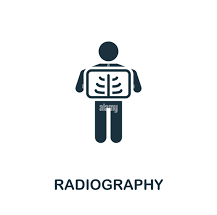
Introduction
Radiography and Imaging Technology, particularly in the context of a Bachelor of Science degree program, encompasses a broad spectrum of knowledge and skills vital to the medical field. The program covers essential areas crucial for shaping modern healthcare and advancing medical diagnostics.
Radiography as a Branch of Medical Imaging
Radiography, as a branch of medical imaging, involves the use of various imaging modalities such as:
- X-rays for fracture detection.
- CT scans for internal imaging.
- MRI for soft tissue visualization.
- Ultrasound for real-time imaging.
- Nuclear medicine for functional studies.
Advancements in these technologies enhance diagnostic accuracy and patient care.
Bachelor of Science Degree Curriculum
The curriculum equips students with:
- Comprehensive anatomy and physiology knowledge.
- Radiographic techniques and radiation safety protocols.
- Hands-on clinical training and patient care skills.
- Critical thinking and problem-solving abilities.
- Communication skills for effective teamwork.
This holistic approach ensures readiness for various clinical environments.
X-ray Imaging
One of the primary modalities in radiography, X-ray imaging:
- Utilizes electromagnetic radiation.
- Helps detect fractures and disease progression.
- Aids in medical procedures such as angiography.
- Benefits from digital and computed radiography advancements.
These innovations enhance workflow efficiency and image quality.
Computed Tomography (CT)
CT scanning produces cross-sectional images and:
- Offers detailed insights into soft tissues.
- Facilitates diagnosis of tumors and strokes.
- Utilizes advanced imaging algorithms for precision.
- Enables early detection of abnormalities.
CT technology continues to evolve for improved treatment planning.
Magnetic Resonance Imaging (MRI)
MRI uses magnetic fields to generate images and:
- Offers superior soft tissue contrast.
- Is safe due to the lack of ionizing radiation.
- Diagnoses neurological and musculoskeletal conditions.
- Implements advanced imaging techniques.
Ongoing advancements enhance its clinical applications.
Ultrasound Imaging
Ultrasound employs high-frequency sound waves to:
- Visualize internal organs and fetal development.
- Guide interventional procedures accurately.
- Provide safe imaging across various specialties.
- Enhance point-of-care diagnostics.
This modality is invaluable for real-time clinical assessments.
Nuclear Medicine
Nuclear Medicine uses radioactive substances to:
- Provide functional insights into diseases.
- Stage tumors and monitor treatment responses.
- Deliver targeted radionuclide therapies.
- Minimize impact on surrounding healthy tissues.
This specialized field is crucial for personalized treatment approaches.
Radiation Safety and Patient Care
Radiographers adhere to strict safety protocols to:
- Minimize radiation exposure to patients and themselves.
- Optimize image quality using protective measures.
- Ensure compliance with ALARA principles.
- Engage in continuous education on safety practices.
These efforts uphold patient welfare and safety standards.
Conclusion
Radiography and Imaging Technology encompass diverse imaging modalities and techniques aimed at enhancing patient outcomes. The program fosters a commitment to lifelong learning and ethical practice, ensuring graduates are well-prepared to navigate the evolving landscape of healthcare technology.